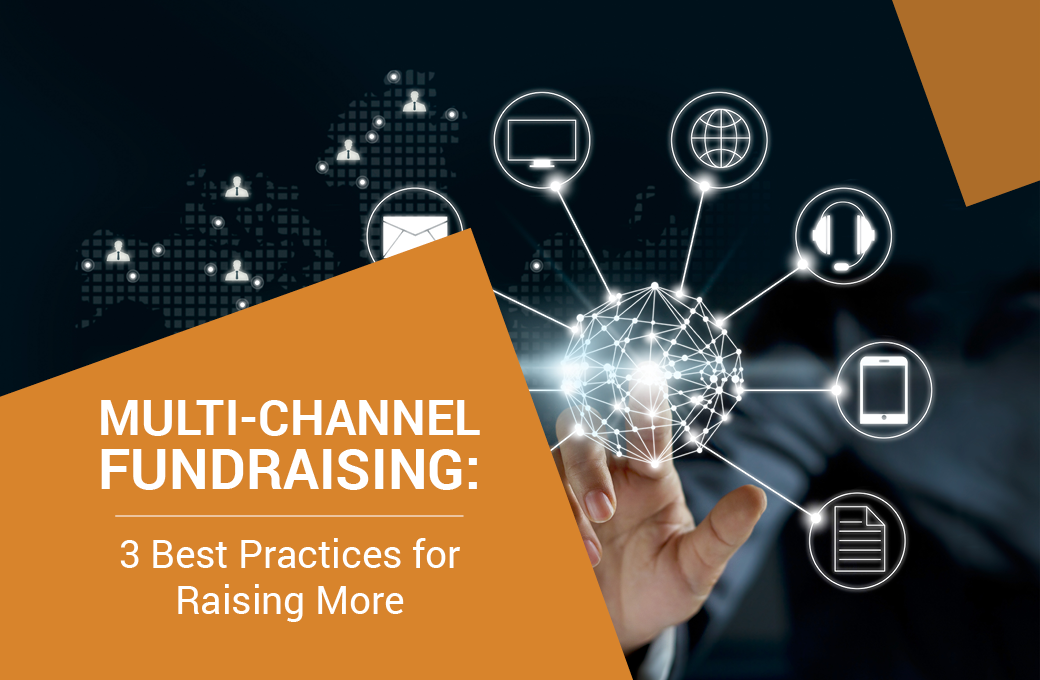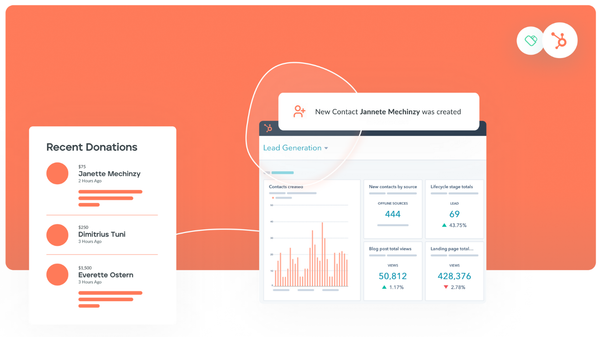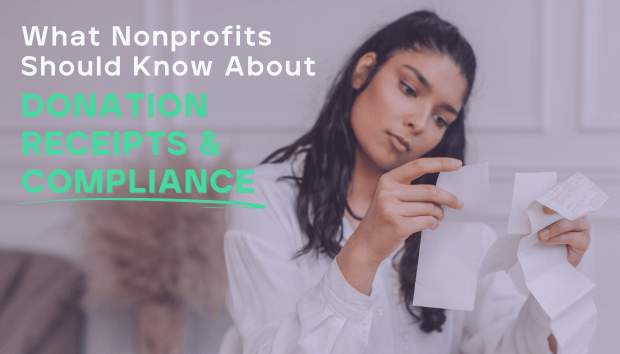Multi-Channel Fundraising: 3 Best Practices for Raising More
Your fundraiser’s success is determined by your nonprofit’s ability to reach supporters. Use these best practices to raise more across multiple channels.

This post was contributed by GivingMail.
Fundraising has evolved, creating both new opportunities and new challenges for nonprofits. While traditional fundraising channels such as direct mail still have their place (and continue to be the most important channels for a number of donors), online fundraising has become a necessity for connecting with supporters. However, it’s often not a question of either/or—but a question of how to ensure your traditional and developing fundraising channels go hand in hand to raise the support you need through a multi-channel approach.
Donor conversion takes multiple steps as donors are introduced to your nonprofit, learn about your mission, then decide to offer support. Reaching out on multiple channels gives your nonprofit more opportunities to start this process as potential supporters discover or rediscover your cause.
Most marketing strategies for nonprofit organizations use donor databases that record interactions, contact information, and past donations. Donor databases and other fundraising tools allow your nonprofit to coordinate fundraising campaigns across multiple channels, helping you identify where their supporters are and how to engage them.
To help your nonprofit make the most of its communication channels, follow these three steps:
- Determine the channels where your supporters are most active
- Align your digital and print content marketing strategies
- Create a timeline for your multi-channel fundraising campaign
Begin your multi-channel fundraising campaign with a goal. Determine what your nonprofit hopes to achieve in its outreach efforts, so you can tailor each step to align with your specific needs.
1. Determine The Channels Where Your Supporters Are Most Active
You need to know where your donors are before you can ask them for a donation. While you can make inferences about which communication channels your supporters prefer to be contacted through, your donor database will record donor engagement. This allows your nonprofit to identify which channels generate the most activity, and thus the most potential to gain supporters.
Once you pull reports from your donor database, be sure to take the following steps:
- Analyze trends and engagement history. Some engagement trends are easy to determine. How many followers do your accounts have on social media? Do you regularly get comments or other engagement on your posts? Does this engagement translate to donations? A widely shared social media post does not always translate to support, so make marketing decisions based on donation trends rather than Facebook likes.
- Create supporter personas. It’s easier to market to one or two people rather than a crowd. That’s why many nonprofits create personas. Personas are representations of your potential supporters. Use your data to find commonalities between your supporters such as age, income, and average donation. Combine these traits to create a hypothetical person who becomes your supporter persona. Use your knowledge of your supporters and what the data shows to determine what the persona wants and why they donate to your organization.
- Conduct A/B testing. As you create messaging documents, you will encounter moments where you’re unsure which design or wording will most appeal to your supporters. In these instances, your nonprofit can use A/B testing where one group of supporters receive message A and another receives message B so you can track the results of each. A/B testing only works if you keep track of which supporters receive which message, so you can determine which was the most successful.
- Prioritize most active channels. While multi-channel fundraising is effective, some channels will not be worth the return on investment. For example, social media has low start-up costs but can be a time sink. If you have regularly high engagement rates on Facebook but few on Twitter, consider expanding your presence on the platform where you can guarantee success.
- Determine if you can refine your approach on less successful channels. Sometimes channels have lower activity, not because your supporters aren’t there, but because your nonprofit is using a suboptimal strategy. For example, your emails might not be mobile-optimized, which could result in losing a large portion of your audience despite having engaging content on that channel.
Learning how to make the most of a channel takes time. Your nonprofit should explore its options to discover which practices align with its fundraising goals.
2. Align Your Digital And Print Content Marketing Strategies
Why does multi-channel marketing work? As mentioned before, it gives supporters multiple opportunities to begin the donor conversion process. However, opportunities need to support and build on each other. While you should explore different strategies, if a potential donor receives an email that says one thing about your nonprofit and direct mail that paints you in a completely different light, they’ll likely just be confused.
Different marketing channels have their own rules for success, but your core strategies should align to support the same goal. Part of this requires having a deep understanding of your nonprofit’s brand and how to effectively showcase it on different platforms.
As GivingMail’s guide to fundraising appeals explains, some strategies such as personalization and including suggested donation amounts work for contacting individual supporters through channels like email and direct mail. However, digital and print media do have a few key differences:
- Digital marketing such as email outreach requires immediate, attention grabbing engagement lines and visuals. For example, consider your email’s subject line. It needs to be informative and create a sense of urgency without seeming spammy. Otherwise, the recipient might not even choose to open your message.
- Print marketing such as direct mail needs to be memorable. While an opened email can attract a donation in minutes, direct mail works best when it creates a long-term connection with supporters through the physicality of a letter, postcard, or other document. Check out this guide for more advice on how to get creative with your direct mail appeals.
Print and digital need to meet different goals to succeed, but your messages on both platforms should support the same overarching goal. Remember, many of your supporters will receive your letter and your email. If your letter instills a sense of urgency for a specific campaign goal, make sure your email follows suit to reinforce what your nonprofit is and why you’re fundraising.
3. Create A Timeline For Your Multi-Channel Fundraising Campaign
Contacting supporters on multiple channels requires coordination to create multiple touch points that support each other. Construct a timeline for your campaign that includes your social media posting schedule, email updates, and direct mailings.
Your calendar shouldn’t be incidental. Along with a specific goal, your fundraiser should have a trajectory that your messages can support. For example, you might kick off the fundraiser with direct mail to select supporters, then provide updates on social media to inform your supporters about how close you are to reaching your fundraising goal. Additional emails could also include information about your fundraiser’s progress and encourage supporters to follow along on social media.
Consider the language you use in your fundraising message. Build the narrative of your fundraiser by sharing details in consecutive messages to create a sense of progress. Additionally, many of your supporters will likely receive messages on multiple channels, so while your messages can be similar in content across platforms, take care not to repeat yourself word for word.
Strategies like these help build excitement as supporters are alerted about the fundraiser and invited to jump in with their donations as momentum increases.
As you plan your fundraising timeline, be sure to:
- Include the fundraiser dates in your message. The start and end dates (if applicable) will help generate a sense of urgency for your supporters, while also assisting your nonprofit in keeping track of which messages get sent out when.
- Plan how you will track messages. Use your donor database, email service provider, direct mail service, or other tracking system to monitor where each message goes, whether or not it's received, and if its recipient makes a donation. You can’t measure how successful a marketing campaign is if you have no data from your marketing!
- Create a target goal for each communication channel. Whether or not your fundraiser earns donations will determine if your campaign succeeded, but decide on goals for each marketing channel as well. For new channels, it might be enough to see a return on your investment. If your nonprofit has more experience marketing on specific channels, set growth or sustainability goals to push towards improved fundraising in the future.
After your fundraiser, continue reaching out to supporters on their preferred channels. Part of multi-channel fundraising effectiveness is the ability to start long-term relationships by staying in regular contact with supporters on different platforms.
One way to continue your relationship with supporters immediately after your fundraiser is by sending thank you cards. Like with your other messages, tailor your thank you letters to the medium they’ll be delivered through. As thank you letters are also direct contact documents, each should also be personalized to its recipient. Look to your CRM, email service provider, or additional resources like Fundraising Letters’ optimized thank you letter templates for help getting started.
Wrapping Up
As your nonprofit explores different fundraising channels, some will likely garner more success than others. Make the most of the channels that generate activity, but continue reaching out to supporters across multiple channels to create additional engagement touchpoints. Communicating repeatedly on different platforms helps your nonprofit build connections and brand recognition that pays off when your nonprofit launches its fundraiser.
Guest Author: Grant Cobb
Grant Cobb is a fundraising specialist with over 6 years of experience in the nonprofit space. Currently the head of marketing and analytics at GivingMail, he is a huge proponent of data-driven decision making and the push to bring high-level analytics and fundraising to all.





